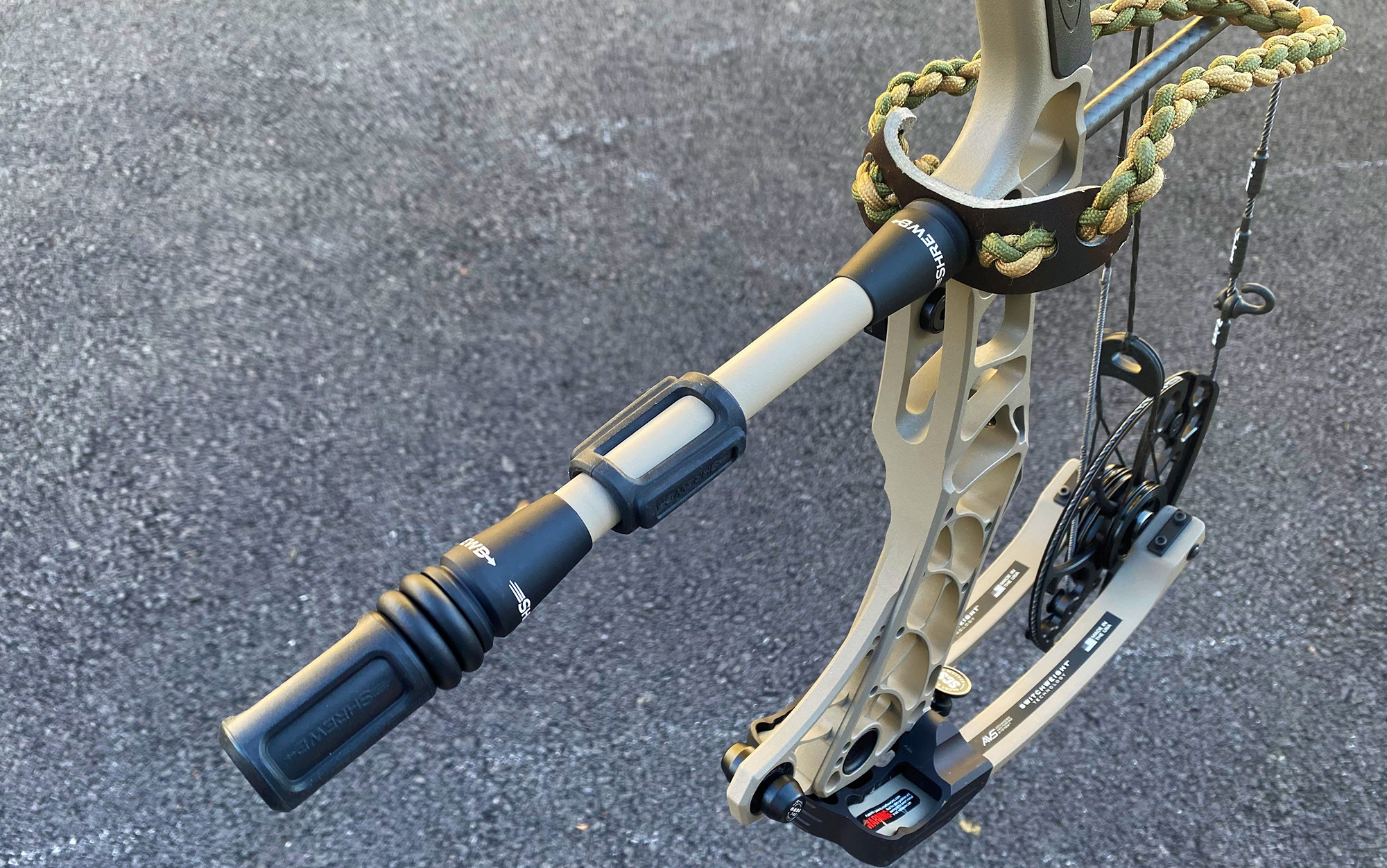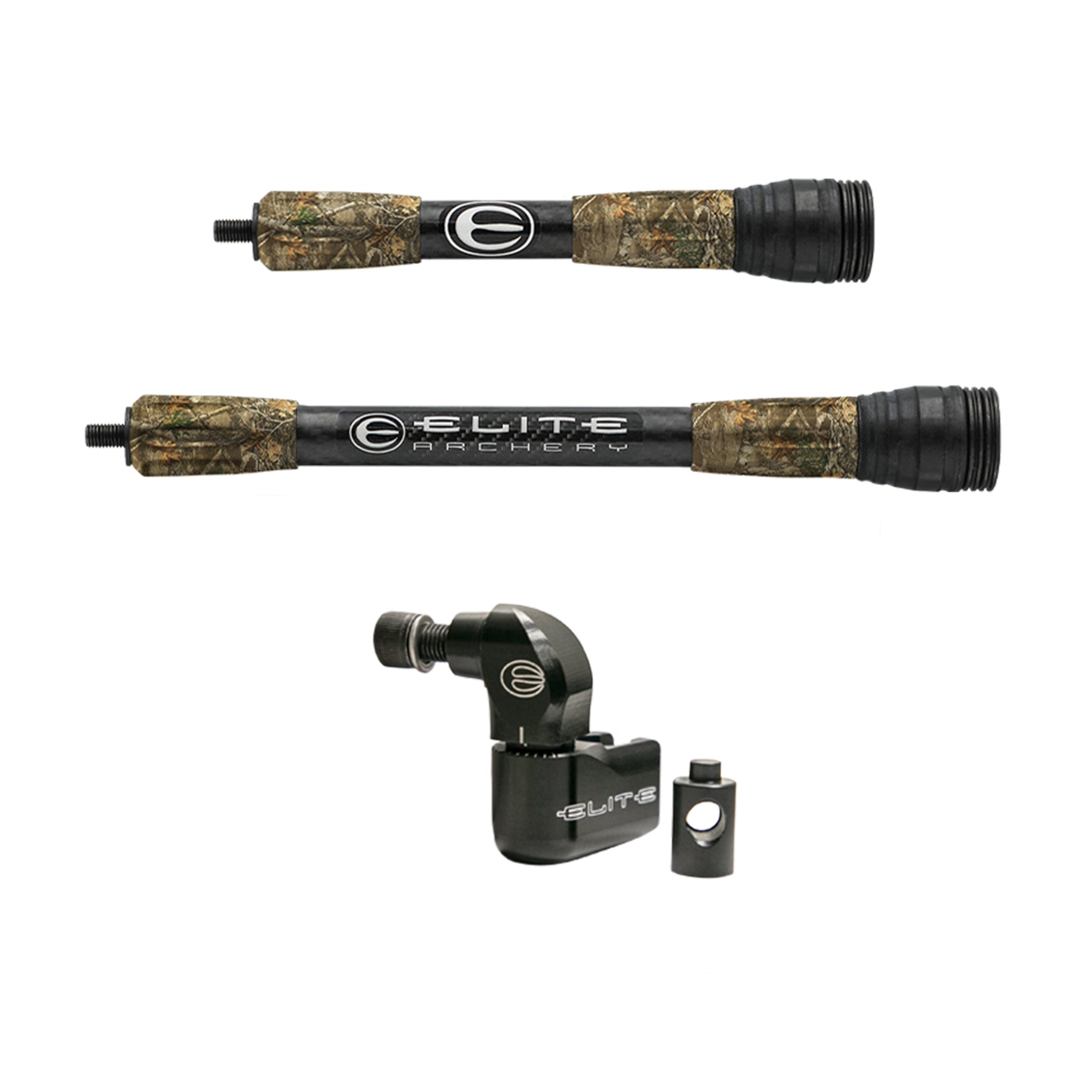Bow Stabilizer : Your Ultimate Overview to Improved Archery Accuracy
Bow Stabilizer : Your Ultimate Overview to Improved Archery Accuracy
Blog Article
Maximize Your Archery Accuracy With These Bow Stabilizer Techniques
One vital element that can substantially influence your efficiency is the proper usage of bow stabilizers. Whether you are an experienced archer looking to refine your skills or a newbie anxious to improve your accuracy, grasping these bow stabilizer methods could be the secret to hitting your mark with unrivaled consistency.
Advantages of Making Use Of Bow Stabilizers
Using bow stabilizers can dramatically boost an archer's accuracy and overall efficiency by minimizing bow torque and resonance. Additionally, bow stabilizers wet resonance, which not only boosts the convenience of capturing however additionally stops the bow from leaping upon release, thus helping in preserving proper objective.
Moreover, bow stabilizers can help in holding the bow stable, especially during gusty conditions or when shooting from longer ranges. The included weight at the front of the bow provides security and balance, enabling the archer to concentrate on aiming without the disturbance of bow movement. Overall, the benefits of utilizing bow stabilizers prolong past just precision, boosting the archer's experience and efficiency in various shooting circumstances.
Picking the Right Bow Stabilizer
Picking the ideal bow stabilizer is important for maximizing your archery equipment and enhancing shooting performance. When selecting a bow stabilizer, there are numerous variables to consider to guarantee you find the ideal fit for your demands. First of all, consider the weight of the stabilizer. Larger stabilizers can help in reducing bow torque and absorb more resonance, causing a steadier purpose. However, lighter stabilizers offer more ability to move, which can be beneficial in specific shooting situations.

Last but not least, think about the layout of the stabilizer. Some stabilizers come with flexible weights or dampeners that allow you to personalize the equilibrium and feel of your bow. Ultimately, choosing the ideal bow stabilizer involves discovering a balance between weight, product, style, and length to enhance your capturing accuracy and general performance.
Proper Setup Methods
To guarantee ideal performance and safety in archery, mastering proper installment methods for your bow stabilizer is crucial. The very first step in mounting a bow stabilizer is to recognize the appropriate placement on your bow.
Next, safely affix the stabilizer to the bow using the suitable placing hardware. It is important to tighten the stabilizer comfortably to stop any type of tottering during shots. Some stabilizers feature flexible weights that can be included or gotten rid of to make improvements the equilibrium of your bow. Explore different weight arrangements to discover the optimal equilibrium that matches your shooting style.

Changing Stabilizer Weight and Length
After guaranteeing the correct setup of your bow stabilizer, the following step involves changing the weight and length to enhance its efficiency in boosting archery accuracy. The weight of the stabilizer plays a vital role in minimizing bow motion throughout the shot cycle. Adding weight to the stabilizer can help moisten resonances and enhance stability, causing even more regular and exact shots. On the other hand, reducing the webpage weight can increase maneuverability, which is advantageous for situations calling for fast target purchase.
When it comes to stabilizer length, discovering the ideal balance is essential. A longer stabilizer can supply higher stability by enhancing the range between the bow and the weight at the end of the stabilizer. This included distance boosts the stabilizing effect, especially in windy conditions or when contending longer ranges. On the other hand, a much shorter stabilizer supplies a lot more maneuverability and may be preferred by archers who value agility and quick activities throughout capturing.
Advanced Stabilizer Tuning Tips
Accomplishing optimal bow security and accuracy in archery demands a nuanced strategy to innovative stabilizer adjusting. Advanced stabilizer tuning entails fine-tuning various parts to improve the bow's equilibrium, lower resonance, and boost total accuracy.
One more essential aspect of sophisticated stabilizer adjusting is optimizing the damping homes of the stabilizer system. Discovering different materials for the stabilizer building, such as carbon fiber or light weight aluminum, can likewise affect the bow's efficiency by modifying its weight distribution and rigidity.
Conclusion
To conclude, making best use of archery precision can be accomplished through the proper option, installation, and adjustment of bow stabilizers. By recognizing the advantages of utilizing stabilizers, selecting the appropriate one, and adjust its weight and size, archers can enhance their shooting this page precision. Utilizing advanced tuning techniques can even more enhance stability and consistency in arrowhead trip. In general, incorporating bow stabilizers into archery method can lead to better efficiency and increased accuracy.
Using bow stabilizers can substantially enhance an archer's precision and overall performance by lessening bow torque and vibration. Longer stabilizers give greater security and balance, specifically for long-distance shooting, while shorter stabilizers offer even more versatility and are easier to navigate in tight areas (bow stabilizer). Carbon fiber stabilizers are light-weight and long lasting, while basics aluminum stabilizers are robust and offer superb vibration dampening
A longer stabilizer can supply higher stability by enhancing the range between the bow and the weight at the end of the stabilizer.Another important facet of innovative stabilizer tuning is enhancing the damping residential or commercial properties of the stabilizer system.
Report this page